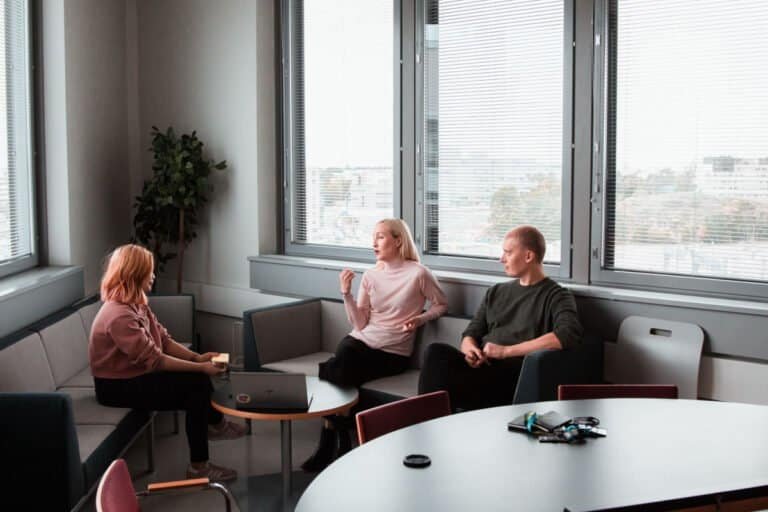Counseling and Neurodiversity: Supporting Diverse Brains
Understanding neurodiversity in counseling involves a nuanced approach that acknowledges and celebrates the unique wiring of each individual's brain.
As a counselor, you may encounter a diverse range of clients, each with their own set of cognitive differences that require specialized support.
Tailoring therapeutic interventions to accommodate these variations can lead to more effective outcomes.
But how can you truly create a therapeutic environment that caters to this broad spectrum of neurodiversity?
Stay tuned to explore practical strategies for supporting clients with diverse brains and promoting inclusivity in your counseling practice.
Key Takeaways
- Embrace cognitive diversity through personalized interventions and tailored support.
- Create inclusive therapy environments by fostering trust, respect, and open dialogue.
- Celebrate individual strengths and empower neurodiverse individuals.
- Tailor counseling techniques and interventions to support specific neurodiverse conditions effectively.
Understanding Neurodiversity in Counseling
Understanding neurodiversity in counseling involves recognizing the unique strengths and challenges that individuals with diverse neurological conditions bring to the therapeutic setting. Neurodiversity acceptance is a fundamental aspect of counseling that emphasizes embracing differences in brain functioning rather than viewing them as deficits. By acknowledging the diverse ways in which individuals process information and interact with the world, counselors can create a more inclusive and supportive environment for their clients.
Various counseling approaches can be employed to effectively support neurodiverse individuals. Person-centered therapy, for instance, focuses on the individual's unique experiences and perspective, fostering a sense of acceptance and understanding. Cognitive-behavioral therapy helps individuals identify and modify unhelpful thinking patterns and behaviors, promoting positive coping strategies. Additionally, mindfulness-based approaches can assist neurodiverse individuals in better managing stress and improving self-regulation skills.
Incorporating these counseling approaches with neurodiversity acceptance can lead to more personalized and effective therapeutic interventions tailored to the specific needs of each individual.
Tailoring Therapeutic Approaches for Diversity
Tailoring therapeutic approaches for diversity requires a vital understanding of individual needs and experiences to provide effective support and guidance. Personalized interventions and individualized approaches are essential in catering to the unique requirements of each person. By employing tailored strategies and customized techniques, counselors can create a therapeutic environment that resonates with the diverse needs of neurodiverse individuals.
When developing personalized interventions, it's essential to take into account the specific challenges and strengths of each individual. Understanding how neurodiverse conditions manifest in different ways allows for the customization of therapeutic techniques to address these variations effectively. By tailoring strategies to suit the individual, counselors can enhance the therapeutic process and foster meaningful progress.
Individualized approaches involve recognizing the distinct preferences and communication styles of each person. By adapting counseling techniques to align with these preferences, counselors can establish trust and rapport, paving the way for more impactful therapeutic outcomes. Customizing interventions based on individual needs not only acknowledges the diversity within neurodiverse populations but also promotes inclusivity and empowerment in the counseling process.
Creating Inclusive Therapy Environments
When creating inclusive therapy environments, it's essential to implement safe space practices and culturally sensitive approaches.
By fostering an environment where individuals feel validated and respected, therapy sessions can become more effective and beneficial.
Ensuring that everyone's unique needs and backgrounds are acknowledged can lead to a more inclusive and supportive therapeutic experience.
Safe Space Practices
In fostering an inclusive therapy environment, it is essential to establish safe space practices that prioritize the unique needs and experiences of neurodiverse individuals. Building trust and fostering connections through effective communication strategies are key components of creating a safe and supportive space for clients. By actively listening, validating emotions, and respecting boundaries, counselors can cultivate an environment where neurodiverse individuals feel understood and accepted. Encouraging open dialogue and offering flexibility in communication styles can help bridge any potential gaps in understanding. It is important to remember that each person is different, and tailoring approaches to suit individual preferences can go a long way in promoting a sense of safety and belonging in therapy sessions.
| Safe Space Practices | Benefits |
|---|---|
| Active Listening | Fosters trust |
| Validation of Emotions | Enhances connection |
| Respect for Boundaries | Promotes acceptance |
| Open Dialogue | Encourages sharing |
Culturally Sensitive Approaches
To create an inclusive therapy environment, it's essential to implement culturally sensitive approaches that acknowledge and respect the diverse backgrounds and experiences of clients.
Cultural competency is vital in therapy to make sure that individuals from all cultural backgrounds feel understood and supported. By incorporating intersectional approaches, therapists can better understand the complex interactions between a person's cultural identity and their neurodiversity.
It's important to recognize that each client's experience is unique and shaped by various cultural factors. Through culturally sensitive practices, therapists can create a safe and welcoming space where clients feel validated and empowered.
Embracing Different Cognitive Styles
Embracing the various cognitive styles present among individuals is essential for fostering understanding and inclusivity in counseling for neurodiversity. Each person's unique way of thinking contributes to the richness of human experience and should be appreciated and leveraged in counseling sessions.
- Cognitive Flexibility: Recognize and celebrate the different ways individuals process information and solve problems. Encouraging cognitive flexibility allows clients to explore new perspectives and develop adaptive strategies.
- Individual Strengths: Focus on identifying and nurturing the individual strengths of each client. By highlighting what they excel at, you can help build confidence and empower neurodiverse individuals to navigate challenges effectively.
- Embracing Diversity: Create a safe and supportive environment where diverse cognitive styles aren't only accepted but celebrated. Embracing this diversity fosters a sense of belonging and promotes neurodiverse empowerment throughout the counseling process.
Supporting Clients With Autism Spectrum
Understanding the unique needs and perspectives of clients on the autism spectrum is critical in providing effective and empathetic support in counseling sessions. Individuals with autism spectrum disorder often face challenges related to social skills and sensory processing, which can have a major impact on their daily lives and interactions. As a counselor, it is essential to create a safe and understanding environment where clients feel supported and validated.
| Challenges | Strategies |
|---|---|
| Social Skills | Implement social stories |
| Use visual schedules | |
| Practice role-playing | |
| Sensory Processing | Offer sensory breaks |
| Create a sensory-friendly space | |
| Use noise-canceling headphones |
When working with clients on the autism spectrum, it is critical to tailor counseling techniques to accommodate their unique needs. By incorporating strategies that focus on improving social skills and addressing sensory processing difficulties, you can help clients navigate the challenges they face and empower them to lead fulfilling lives.
Strategies for ADHD Counseling
When working with clients who have ADHD, it's essential to explore behavior management techniques and mindfulness practices.
These strategies can help individuals with ADHD better understand and regulate their actions and thoughts.
Behavior Management Techniques
Utilizing effective behavior management techniques is essential in counseling individuals with ADHD to help them navigate daily challenges and improve their overall well-being. When working with someone with ADHD, consider implementing the following strategies:
- Positive Reinforcement: Encouraging desired behaviors through praise or rewards can help individuals stay motivated and focused on tasks.
- Structured Routines: Establishing predictable schedules and clear expectations can provide a sense of stability and reduce feelings of overwhelm.
- Sensory Regulation: Creating a sensory-friendly environment by minimizing distractions and offering tools like noise-canceling headphones can help manage sensory overload.
Mindfulness Practices for ADHD
Implementing mindfulness practices can markedly benefit individuals with ADHD by helping them enhance self-awareness and regulate their attention and emotions. Focus techniques such as setting specific goals, breaking tasks into smaller steps, and using visual aids can assist in improving concentration.
Additionally, incorporating meditation tips like deep breathing exercises and body scans can aid in calming the mind and reducing impulsivity. Encouraging mindfulness through activities like yoga or mindful walking can also enhance overall well-being for individuals with ADHD.
Addressing Dyslexia in Therapy
In therapy sessions for individuals with dyslexia, it's important to create a supportive and understanding environment that fosters growth and confidence. Understanding the unique challenges faced by individuals with dyslexia is critical in providing effective therapy.
Here are some key strategies to address dyslexia in therapy:
- Implement Multisensory Techniques: Utilize methods that engage multiple senses, such as visual aids, tactile materials, and auditory cues, to enhance learning and comprehension.
- Encourage Assistive Technology: Introduce tools like text-to-speech software, audiobooks, or speech recognition programs to support reading and writing tasks.
- Promote Self-Advocacy Skills: Help individuals with dyslexia build confidence and assertiveness in expressing their needs, seeking accommodations, and advocating for themselves in academic or professional settings.
Navigating Anxiety and Neurodiversity
Managing anxiety while embracing neurodiversity can present unique challenges that require personalized and holistic approaches to support individuals effectively. When it comes to neurodiversity, incorporating coping mechanisms and stress management techniques tailored to individual needs is essential. Additionally, focusing on developing social skills and managing peer interactions can greatly impact anxiety levels in neurodiverse individuals. Here is a table highlighting some strategies for managing anxiety in the context of neurodiversity:
| Coping Mechanisms | Social Skills |
|---|---|
| Deep breathing exercises | Practicing active listening |
| Mindfulness practices | Joining social groups |
| Journaling | Seeking therapy |
| Regular exercise | Participating in team activities |
| Establishing routines | Engaging in role-playing scenarios |
These strategies can help individuals with neurodiverse conditions reduce anxiety levels and enhance their overall well-being. By prioritizing personalized approaches that consider the individual's unique strengths and challenges, counselors can effectively support neurodiverse clients in managing anxiety and thriving in diverse social environments.
Empowering Clients With Diverse Brains
You can help your clients with diverse brains by embracing their unique perspectives.
By acknowledging these differences, you can cultivate their strengths and resilience.
This approach creates a supportive environment that fosters growth and empowerment.
Embracing Unique Perspectives
Understanding the diverse perspectives of your clients with unique brains is crucial for empowering them in the counseling process. Each individual's viewpoint is a valuable piece of the puzzle that shapes their experiences and challenges. When you embrace these unique perspectives, you open the door to a deeper connection and a more effective therapeutic journey.
Here are three ways to empower clients with diverse brains:
- Validate Their Experiences: Acknowledge and respect the varied insights your clients bring to the table.
- Encourage Self-Expression: Create a safe space for clients to share their thoughts and feelings freely.
- Explore Different Approaches: Be open to exploring unconventional methods that may better resonate with your clients' unique perspectives.
Cultivating Strengths and Resilience
Embracing the unique perspectives of individuals with diverse brains paves the way for cultivating their strengths and resilience in the counseling process. A strength-based approach focuses on identifying and harnessing the inherent capabilities and positive qualities of neurodiverse clients. By recognizing and building upon these strengths, counselors empower clients to navigate challenges and develop resilience.
Resilience building involves fostering coping strategies, self-advocacy skills, and a sense of agency in clients with diverse brains. Through targeted interventions and support, individuals can enhance their ability to bounce back from setbacks and adapt to changing circumstances. By fostering a strengths-based approach and resilience building, counselors can empower clients to thrive and lead fulfilling lives despite the challenges they may face.
Advocating for Neurodiverse Inclusivity
Advocating for neurodiverse inclusivity involves actively promoting understanding and acceptance of diverse neurological differences within society. When advocating for neurodiverse inclusivity, consider the following:
- Neurodiversity advocacy: Engage in activities that promote the acceptance and celebration of neurodivergent individuals. Support organizations that advocate for the rights and inclusivity of neurodiverse individuals within communities.
- Community support: Foster a sense of belonging and support for neurodiverse individuals within various community settings. Encourage the creation of safe spaces where individuals can express themselves freely without fear of judgment or discrimination.
- Inclusivity campaigns: Participate in campaigns that aim to raise awareness about neurodiversity and the importance of inclusivity. Support initiatives that challenge stereotypes and promote a more inclusive environment for individuals with diverse neurological differences.
Frequently Asked Questions
How Can Counselors Address the Intersectionality of Neurodiversity With Other Identities, Such as Race, Gender, and Sexuality?
To address the intersectionality of neurodiversity with race, gender, and sexuality, counselors must prioritize identity exploration and cultural competency. By understanding this intersectionality, you can affirm diverse identities and provide inclusive support tailored to individual experiences.
What Are Some Innovative Approaches for Incorporating Technology Into Therapy for Neurodiverse Clients?
Incorporate technology integration by utilizing therapeutic tools like virtual reality or apps tailored to neurodiverse needs. Enhance therapy sessions with interactive platforms that cater to diverse brains, fostering engagement and growth.
How Can Counselors Navigate Legal and Ethical Considerations When Working With Clients With Diverse Brains?
To navigate legal compliance and ethical dilemmas when working with clients with diverse brains, guarantee thorough understanding of laws, codes of conduct, and individual needs. Regularly seek training, consult with colleagues, and prioritize client well-being.
What Are Some Strategies for Advocating for Systemic Change to Promote Inclusivity and Support for Neurodiverse Individuals?
To advocate for systemic change and promote inclusivity for neurodiverse individuals, you can engage in policy reform, educate decision-makers, and collaborate with advocacy groups. By raising awareness, lobbying for rights, and fostering understanding, you can make a difference.
How Can Counselors Support Neurodiverse Clients in Developing Self-Advocacy Skills and Empowerment?
To support neurodiverse clients in self-advocacy and empowerment, counselors foster self-acceptance, teach social skills, and emphasize self-care. Encouraging autonomy and providing tools for communication and boundary-setting are essential for client growth.
Conclusion
As you reflect on counseling and neurodiversity, remember that every brain is like a unique puzzle waiting to be understood and supported.
Just like a painter carefully selecting the right colors for a masterpiece, counselors can tailor their approaches to fit the diverse needs of their clients.
By embracing different cognitive styles and advocating for inclusivity, you can create a safe and empowering environment for those with diverse brains to thrive.







